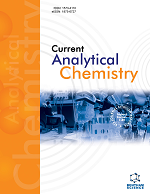
Full text loading...
This study reviews the latest progress of ratiometric fluorescent probes of copper ions from 2022 till now. As a key trace element in biological systems, copper ions play an important role in a variety of biological processes. However, the abnormal change in copper ion concentration is closely related to a variety of diseases, so the development of highly sensitive and highly selective copper ion detection methods is of great significance for scientific research and clinical diagnosis. In this paper, we first introduced the classification of copper ion fluorescence probes, including molecular sensors based on five-membered azocycles, six-membered azocycles, imide groups (R2C=NR'), oxygen and nitrogen functional groups (such as ethers, aldehydes, ketones, esters, carboxylic acids and hydroxyl groups) and group VIA elements. Subsequently, the application of nanosensors in the detection of copper ions is further discussed, especially the nanosensors in which copper is used as a reactant, catalyst or alternative reaction. Finally, the current research status of copper ion fluorescence probes is summarized, and the future development direction is prospected in order to provide reference and inspiration for the design of new high-efficiency copper ion detection tools.

Article metrics loading...

Full text loading...
References


Data & Media loading...

